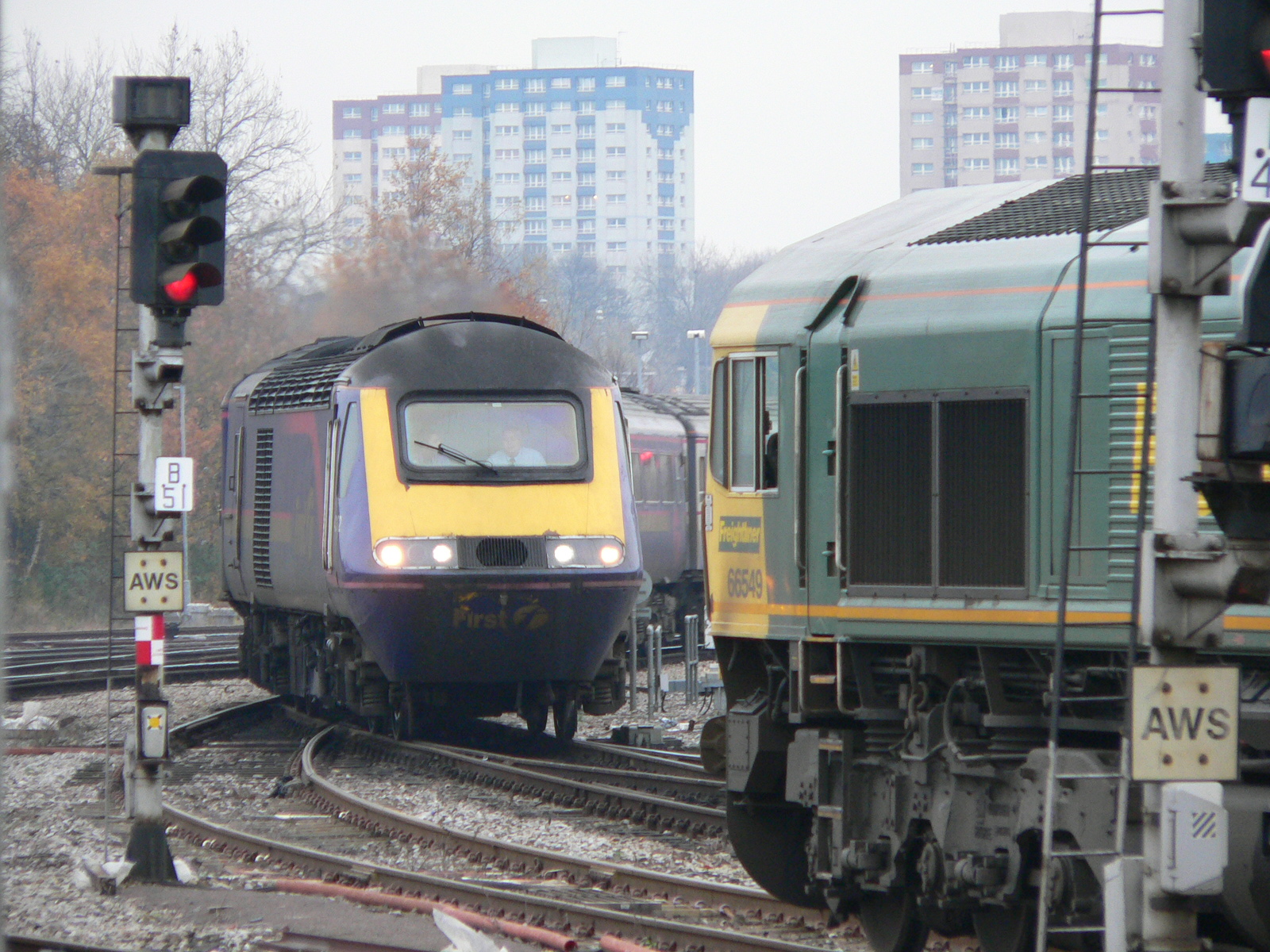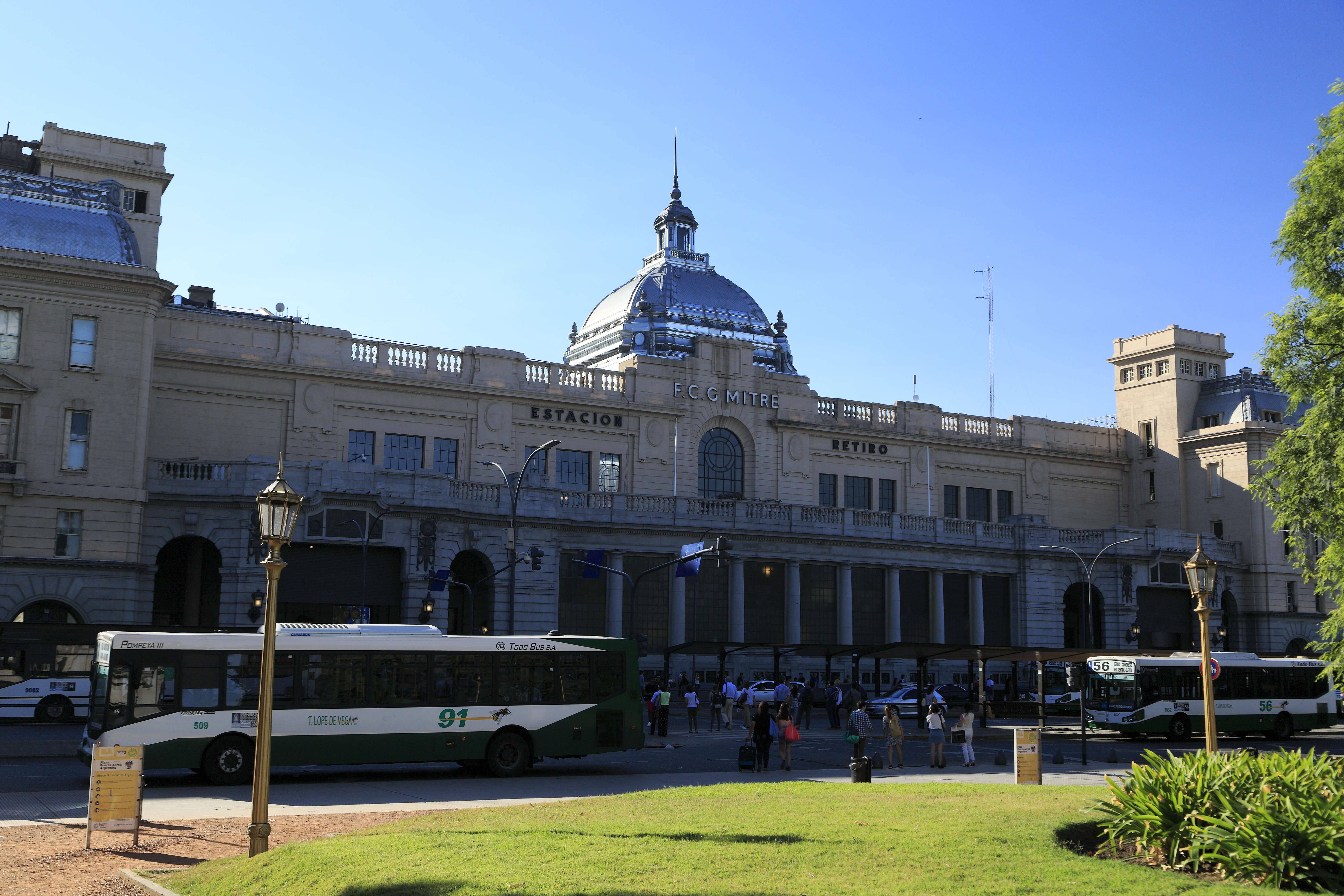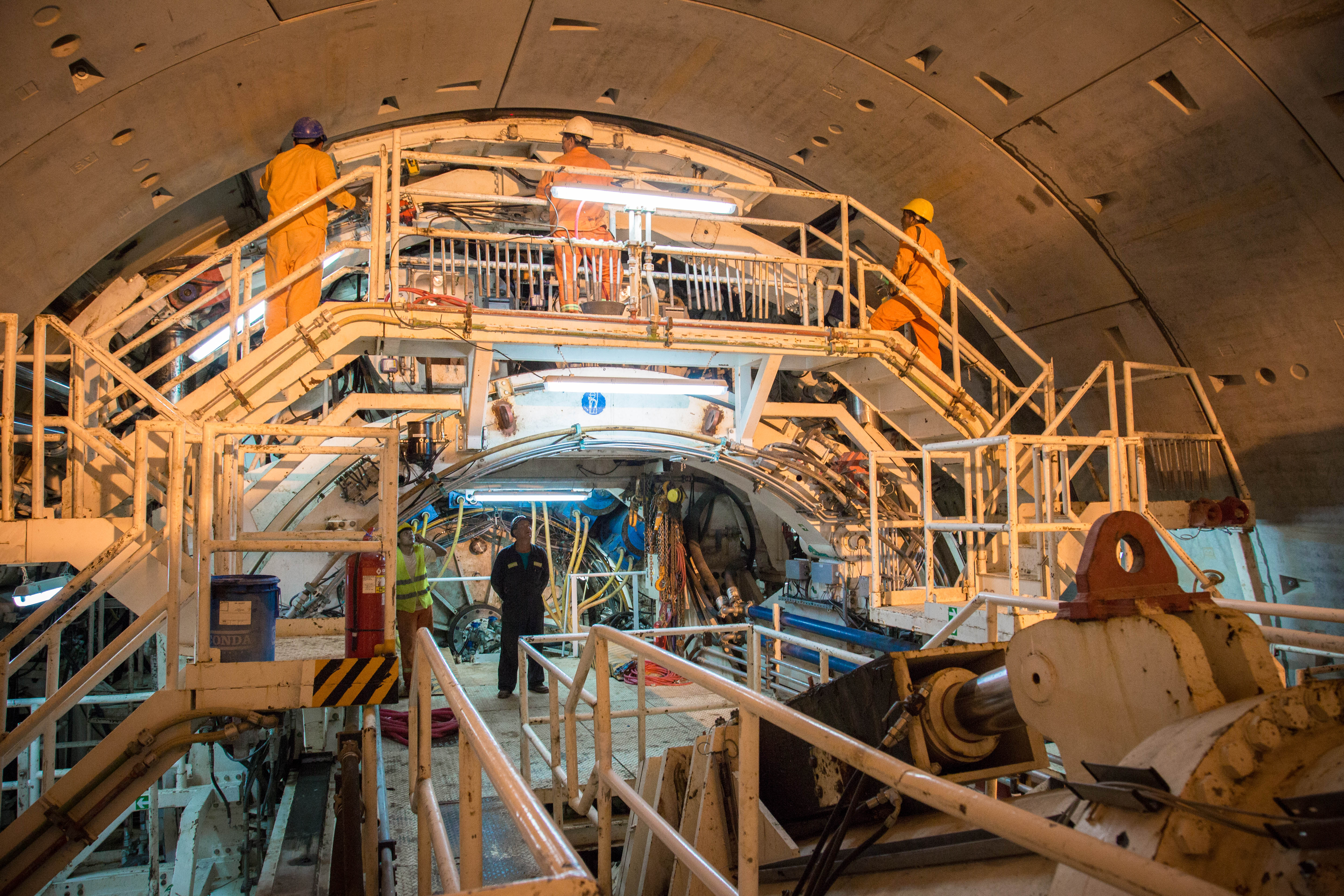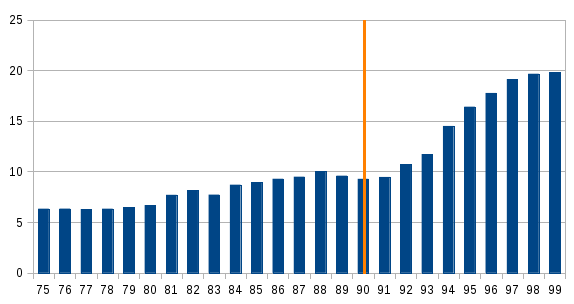|
Trenes De Buenos Aires
Trenes de Buenos Aires (TBA) (In English: Trains of Buenos Aires) was a private company that operated commuter rail services over the broad gauge Sarmiento and Mitre lines of Buenos Aires. The company, owned by Claudio and Mario Cirigliano, also operated long-distance services on the General Mitre Railway to central-western Argentina and on the General Urquiza Railway to northern Argentina and Uruguay on the international Tren de los Pueblos Libres. From 2004 to 2012 TBA, a company which is a subsidiary of the Plaza Group controlled by the Cirigliano family, was part of the consortium Unidad de Gestión Operativa Ferroviaria de Emergencia (UGOFE) which operated other commuter rail services in Buenos Aires. The company became synonymous with the collapse of the railways in Argentina under privatisation and the company was subject to numerous investigations and legal proceedings. History TBA was established in 1995 after the Carlos Menem's administration privatised all th ... [...More Info...] [...Related Items...] OR: [Wikipedia] [Google] [Baidu] |
Sarmiento Line (Buenos Aires)
The Sarmiento line is a broad gauge commuter rail service in Buenos Aires Province, Argentina, run by the state-owned Operadora Ferroviaria Sociedad del Estado, Trenes Argentinos since 11 September 2013. The line is part of Domingo Sarmiento Railway, running trains departing from Once railway station, Once de Septiembre station in the Balvanera neighborhood of Buenos Aires to the cities of Moreno, Lobos, and Mercedes in Buenos Aires Province. The 167-km long line has 40 stations. As of 2018, a total of 101,453 services had been run, with 85,946,312 passengers carried.Informe estadístico 2018 - Sarmiento on Argentina.gob.ar History [...More Info...] [...Related Items...] OR: [Wikipedia] [Google] [Baidu] |
Tren De Los Pueblos Libres
The Tren de los Pueblos Libres ("Train of the Free Peoples") was an 813-km length rural railway line that connected Argentina and Uruguay, being operated by both the Argentine private company Trenes de Buenos Aires (TBA) on General Urquiza Railway standard gauge rail tracks, and Uruguayan the State-owned State Railways Administration of Uruguay "Administración de Ferrocarriles del Estado" (AFE). History The train had run from 1982 to 1985 between cities of Concordia (Argentina) and Salto (Uruguay). After 26 years of being active only for freight trains, the service was officially re-opened on August 11, 2011, in a ceremony held by Presidents of both countries. On 23 September the train made its first journey carrying people from Pilar to Paso de los Toros. Some intermediate stops were Argentine stations Zárate, Enrique Carbó, Urdinarrain, Basavilbaso, Villaguay, San Salvador and Concordia and Uruguayan Salto, Quebracho and Paysandú. From Pilar to Buenos Aires pas ... [...More Info...] [...Related Items...] OR: [Wikipedia] [Google] [Baidu] |
Railway Signalling
Railway signalling (), or railroad signaling (), is a system used to control the movement of railway traffic. Trains move on fixed rails, making them uniquely susceptible to collision. This susceptibility is exacerbated by the enormous weight and inertia of a train, which makes it difficult to quickly stop when encountering an obstacle. In the UK, the Regulation of Railways Act 1889 introduced a series of requirements on matters such as the implementation of interlocked block signalling and other safety measures as a direct result of the Armagh rail disaster in that year. Most forms of train control involve movement authority being passed from those responsible for each section of a rail network (e.g. a signalman or stationmaster) to the train crew. The set of rules and the physical equipment used to accomplish this determine what is known as the ''method of working'' (UK), ''method of operation'' (US) or ''safe-working'' (Aus.). Not all these methods require the use of p ... [...More Info...] [...Related Items...] OR: [Wikipedia] [Google] [Baidu] |
Anti-lock Braking System
An anti-lock braking system (ABS) is a Automotive safety, safety anti-Skid (automobile), skid Brake, braking system used on aircraft and on land motor vehicle, vehicles, such as cars, motorcycles, trucks, and buses. ABS operates by preventing the wheels from locking up during braking, thereby maintaining Traction (mechanics), tractive contact with the road surface and allowing the driver to maintain more control over the vehicle. ABS is an automated system that uses the principles of threshold braking and cadence braking, techniques which were once practiced by skillful drivers before ABS was widespread. ABS operates at a much faster rate and more effectively than most drivers could manage. Although ABS generally offers improved vehicle control and decreases stopping distances on dry and some slippery surfaces, on loose gravel or snow-covered surfaces ABS may significantly increase braking distance, while still improving steering control. Since ABS was introduced in production v ... [...More Info...] [...Related Items...] OR: [Wikipedia] [Google] [Baidu] |
Retiro Mitre Railway Station
Retiro-Mitre, or simply Retiro, is one of the six large mainline railway station termini in Buenos Aires, Argentina. Located in the neighborhood of Retiro, it serves as terminal station for the Mitre Line that runs local trains to the northern suburbs of the Buenos Aires metropolitan area. It also functions as terminal station for the national General Mitre Railway, being one of Argentina's largest railway stations.. Retiro Mitre is accessible by the C line and Line E of the Buenos Aires Metro system and by numerous local public bus services. The station will also be accessible by Line H of the metro once its extension is complete. The station is also near Retiro bus station (''Terminal de Omnibus''), the principal long-distance bus terminal in Buenos Aires. In 2006, the station was declared National Historic Monument of Argentina. History The Edwardian-style station building was designed by the British architects Eustace L. Conder, Roger Conder and Sydney G. Follet ... [...More Info...] [...Related Items...] OR: [Wikipedia] [Google] [Baidu] |
Toshiba
is a Japanese multinational electronics company headquartered in Minato, Tokyo. Its diversified products and services include power, industrial and social infrastructure systems, elevators and escalators, electronic components, semiconductors, hard disk drives, printers, batteries, lighting, as well as IT solutions such as quantum cryptography. It was formerly also one of the biggest manufacturers of personal computers, consumer electronics, home appliances, and medical equipment. The Toshiba name is derived from its former name, Tokyo Shibaura Denki K.K. which in turn was a 1939 merger between Shibaura Seisaku-sho (founded in 1875) and Tokyo Denki (founded in 1890). The company name was officially changed to Toshiba Corporation in 1978. A technology company with a long history and sprawling businesses, Toshiba is a household name in Japan and has long been viewed as a symbol of the country's technological prowess post-World War II. As a semiconductor company and the i ... [...More Info...] [...Related Items...] OR: [Wikipedia] [Google] [Baidu] |
Sarmiento Line
The Sarmiento line is a broad gauge commuter rail service in Buenos Aires Province, Argentina, run by the state-owned Trenes Argentinos since 11 September 2013. The line is part of Domingo Sarmiento Railway, running trains departing from Once de Septiembre station in the Balvanera neighborhood of Buenos Aires to the cities of Moreno, Lobos, and Mercedes in Buenos Aires Province. The 167-km long line has 40 stations. As of 2018, a total of 101,453 services had been run, with 85,946,312 passengers carried.Informe estadístico 2018 - Sarmiento on Argentina.gob.ar History [...More Info...] [...Related Items...] OR: [Wikipedia] [Google] [Baidu] |
Mitre Line
The Mitre line is an Argentine broad gauge commuter rail service in Buenos Aires Province and is part of the Ferrocarril General Bartolomé Mitre division. The service is currently operated by the state-owned company Operadora Ferroviaria Sociedad del Estado after the Government of Argentina rescinded its contract with Corredores Ferroviarios in March 2015. History Background The first line was built and operated by the Buenos Aires Northern Railway, a British-owned company that ran trains from Central Station (then from Retiro) to Tigre, joining both cities in 1857. The company was then taken over by the Central Argentine Railway in 1888 due to financial problems. In 1891, Victoria station was inaugurated. Trains to Zelaya and Capilla del Señor departed from Victoria for the first time one year later. In 1916, the Retiro- Tigre line was electrified, becoming the first electrified railway system in South America. New British Thomson-Houston (BTH) multiple units wer ... [...More Info...] [...Related Items...] OR: [Wikipedia] [Google] [Baidu] |
Railway Privatisation In Argentina
Railway privatisation in Argentina was a process which began in 1989 under the presidency of Carlos Menem, following a series of neoliberalism, neoliberal economic reforms. This primarily consisted of breaking up the state-owned railway company Ferrocarriles Argentinos (FA) and allowing the former lines to be operated by private companies instead of the state. This policy was met with widespread criticism and proved catastrophic for the Argentine railways whose service worsened significantly in the years that followed, with entire lines closing and infrastructure deteriorating beyond repair. Privatisation was ultimately reversed in 2015 with the creation of Nuevos Ferrocarriles Argentinos. Background Since railway nationalisation in 1948, during the presidency of Juan Perón, the network had been operated by the state-owned company Ferrocarriles Argentinos (FA) which comprised the six relatively independent divisions, Domingo Sarmiento Railway, Sarmiento, General Bartolomé Mi ... [...More Info...] [...Related Items...] OR: [Wikipedia] [Google] [Baidu] |
Carlos Menem
Carlos Saúl Menem (2 July 1930 – 14 February 2021) served as the 50th president of Argentina for ten years, from 1989 to 1999. He identified as Peronism, Peronist, serving as President of the Justicialist Party for 13 years (from 1990 to 2001 and again from 2001 to 2003), and his political approach became known as Menemism. Born in Anillaco, La Rioja Province, Argentina, La Rioja, to a Syrian Argentines, Syrian family, Menem was raised as a Muslim,"Carlos Menem" ''Encyclopædia Britannica'' but later converted to Catholic Church, Roman Catholicism to pursue a political career. Menem became a Peronist during a visit to Buenos Aires. He was elected governor of La Rioja in 1973, deposed and detained following the 1976 Argentine coup d'état, and re-elected in 1983. He defeated the Buenos Aires governor Antonio Cafiero in ... [...More Info...] [...Related Items...] OR: [Wikipedia] [Google] [Baidu] |
Coche Toshiba Doble Piso, Ferrocarril Sarmiento, Castelar, Buenos Aires
Coche, a Spanish word for automobile, can refer to: * Coche people, an indigenous people of Colombia * Camsá language, Coche language * Coche Island, Venezuela * Coche station, a rapid transit station in Caracas * Coche d'eau, a horse-drawn water coach, also called Trekschuit * Coche, Al-Mada'in, the name of an ancient urban complex along the Tigris River in Iraq * Chantal Coché (1826 – 1891), Belgian industrialist {{disambig, geo Language and nationality disambiguation pages ... [...More Info...] [...Related Items...] OR: [Wikipedia] [Google] [Baidu] |








